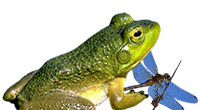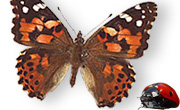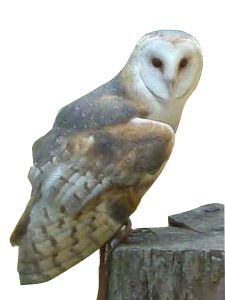Fax: (916) 381-4006



Owl Pellets |
 If you would like information on how you can make an income by collecting owl pellets please contact me at ted@nilesbio.com and use the subject line: owl pellet income. Be sure to include your name, email and contact numbers. If you would like information on how you can make an income by collecting owl pellets please contact me at ted@nilesbio.com and use the subject line: owl pellet income. Be sure to include your name, email and contact numbers. A pellet, in ornithology, is the mass of undigested parts of a bird's food that some bird species occasionally regurgitate. The contents of a bird's pellet depend on its diet, but can include the exoskeletons of insects, indigestable plant matter, bones, fur, feathers, bills, claws, and teeth. In falconry, the pellet is called a casting. The passing of pellets allows a bird to remove indigestable material from its proventriculus, or glandular stomach. In birds of prey, the regurgitation of pellets serves the bird's health in another way, by "scouring" parts of the digestive tract, including the gullet. Pellets are formed within six to ten hours of a meal in the bird's gizzard (muscular stomach). Ornithologists may collect and analyze one species' pellets over a span of time to provide information on the seasonal variation in its eating habits. One advantage of collecting pellets is that it allows for the determination of diet without the killing and dissection of the bird. Pellets are found in different locations, depending on the species. In general, roosting and nesting sites are good places to look: for most hawks and owls, under coniferous trees; for Barn Owls, at the bases of cliffs or in barns and silos; for yet other species of owls, at their burrows or in marsh and field grasses. Hawk and owl pellets are grey or brown, and range in shape from spherical to oblong or plug-shaped. In large birds, they are one to two inches long, and in songbirds, about half an inch. They are found in many other species, including grebes, herons, cormorants, gulls, terns, kingfishers, crows, jays, dippers, shrikes, swallows, and most shorebirds. Ornithologists examining pellets have discovered unusual items in them—even bird bands that were once attached to a smaller species that was consumed by the predator bird. In the United States, screech owl pellets have contained bands from a Tufted Titmouse, Black-capped Chickadee, and American Goldfinch. In 1966, a Golden Eagle pellet in Oregon was found to contain a band placed on an American Wigeon four months earlier, and 1600 km (1000 miles) away in southern California. The Barn Owl (Tyto alba) is one of the most wide-spread of all land birds. Sometimes they are called monkey-faced owls because of their appearance. Other common names are church owl, golden owl, rat owl, and stone owl. They are found on all continents (except Antarctica) and large islands and occur over the whole of Australia, including Tasmania. The Barn Owl is found in virtually all habitats but much more abundantly in open woodland, heaths and moors than forested country. They usually roost by day in tree hollows but have also been found in caves, wells, out-buildings or thick foliage. Barn Owls feed on voles, frogs and insects, but are economically valuable birds as they also prey on animal pests like rats, shrews, moles and mice. Like most birds, Barn Owls do not have teeth to chew their food. Once caught, the Barn Owls prey is swallowed whole. In some cases larger prey may be ripped into more manageable size pieces before being swallowed. After being swallowed the prey is then processed by the Barn Owl so that the owl can make use of all the nutrients it needs to survive. The prey goes directly to the gizzard where it is broken apart by digestive enzymes. The bones and hair that are not digested and utilized by the owl are later regurgitated in the form of a pellet. Small compact balls composed of fur, bones and feathers. Regurgitated by an owl after feeding, these pellets can reveal the type of critters that are preyed upon by the owl and give students an idea of predator-prey relationships. Barn Owls have a notable shreee scream, ear-shattering at close range. They also hiss like steam kettles. When captured or cornered, they throw themselves on their backs and flail with sharp-taloned feet, an effective defense. Barn owls were numerous until the late 1980s, however in recent years the population of the Barn Owl has diminished. We can attribute the owl's decline to a number of factors: old barns being torn down, grasslands reverting to woods or farmland being gobbled up by urban sprawl. Niles Biological is one of the World's largest suppliers of Owl Pellets. Naturally from both an economic and an environmental point of View, the welfare of our business as well as the welfare of our many owl pellet collectors is reliant on the ability for the Barn Owl to thrive. In an effort to study the effects of Urban Sprawl, and other factors we are looking for Collectors in new areas so that we can analyze pellets from these new areas to compare that information with our current data. |
| Featured Items |
|---|
| Extra Large Premium Owl P... |
| Our Extra Large Premium Owl Pellets are complete, intact pellets that are individually wrapped and are 2" and ... |
|
Read more »»»
$4.25 (Buy Now) |
|---|
| Owl Pellets 2nd Quality (... |

The pellet cycle is regular, regurgitating the remains when the digestive system has finished extracting th... |
|
Read more »»»
$1.10 (Buy Now) |
|---|
9298 Elder Creek Road
Sacramento, CA 95829
(916) 386-2665
9298 Elder Creek Road
Sacramento, CA 95829
(916) 386-2665